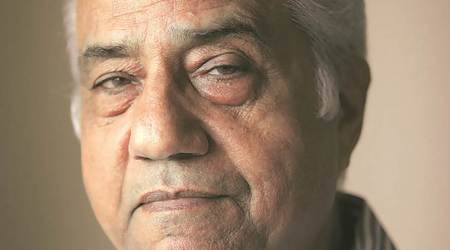 The separate judgments behind the landmark verdict virtually equated the virtual world with the physical world. (Representational)
The separate judgments behind the landmark verdict virtually equated the virtual world with the physical world. (Representational)
When it enshrined right to privacy in the fundamental rights by granting it constitutional protection against the might of the State, the nine-judge bench of the Supreme Court also prepared the ground for right to privacy against non-State actors in the virtual world, one that Internet giants thriving on terabytes of personal data cannot ignore.
“Informational privacy is a facet of the right to privacy. The dangers to privacy in an age of information can originate not only from the State but from non-State actors as well,” Justice D Y Chandrachud wrote in an apparent reference to the inter-connected digital world.
The separate judgments behind the landmark verdict virtually equated the virtual world with the physical world. “We lock our doors, clothe our bodies and set passwords to our computers and phones to signal that we intend for our places, persons and virtual lives to be private,” Justice S A Bobde said in his order, suggesting that homes in the virtual world are entitled to the same privacy as physical homes.
A similar sentiment was echoed by Justice S K Kaul: “If the individual permits someone to enter the house, it does not mean that others can enter the house… this applies both to the physical form and to technology.” He mentioned that tech giants like Facebook, Uber, Alibaba and Airbnb know the whereabouts of people.
“Recently, it was pointed out that Uber, the world’s largest taxi company, owns no vehicles. Facebook, the world’s most popular media owner, creates no content. Alibaba, the most valuable retailer, has no inventory. And Airbnb, the world’s largest accommodation provider, owns no real estate. Something interesting is happening. Uber knows our whereabouts and the places we frequent. Facebook, at the least, knows who we are friends with. Alibaba knows our shopping habits. Airbnb knows where we are travelling to,” he said.
“In this digital age, individuals are constantly generating valuable data which can be used by non-State actors to track their moves, choices and preferences. Data is generated not just by active sharing of information, but also passively, with every click on the world… There is an unprecedented need for regulation regarding the extent to which such information can be stored, processed and used by non-State actors,” Justice Kaul said.
Since the nine-judge bench only had to answer whether right to privacy is a fundamental right, the judgment did not spell out the contours of the right to privacy on the Internet that technology giants must respect. Justice Bobde suggested that the Internet could be among the “constitutional sites” where such a right needs protection.
“Future developments in technology and social ordering may well reveal that there are yet more constitutional sites in which a privacy right inheres that are not at present evident to us,” Justice Bobde said.
Justice Chandrachud, in fact, draws the broad contours of the constitutional sites on the Internet economy that will now be under the spotlight over the right to privacy.
“Every transaction of an individual user and every site that she visits leaves electronic tracks generally without her knowledge. These electronic tracks contain powerful means of information which provide knowledge of the sort of person that the user is, and her interests. Individually, these information silos may seem inconsequential. In aggregation, they disclose the nature of the personality: food habits, language, health, hobbies, sexual preferences, friendships, ways of dress and political affiliation. In aggregation, information provides a picture of the being: of things which matter and those that don’t, of things to be disclosed and those best hidden,” Justice Chandrachud said.
That Internet giants are developing and deploying technologies to trawl through individual data to build businesses in the Internet economy has not escaped the court. It is most evident in the landscape elaborated by Justice Chandrachud.
“Data mining processes together with knowledge discovery can be combined to create facts about individuals. Metadata and the Internet of things have the ability to redefine human existence in ways which are yet fully to be perceived. Users of wearable devices and social media networks may not conceive of themselves as having volunteered data but their activities of use and engagement result in the generation of vast amounts of data about individual lifestyles, choices and preferences,” he said.
“Lives are open to electronic scrutiny. To put it mildly, privacy concerns are seriously an issue in the age of information… The balance between data regulation and individual privacy raises complex issues requiring delicate balances to be drawn between the legitimate concerns of the State on one hand and individual interest in the protection of privacy on the other,” Justice Chandrachud said.
Justice Kaul made the Supreme Court’s point very clearly: “In today’s world, privacy is a limit on the government’s power as well as the power of private sector entities.”
According to the latest report of venture capital firm Kleiner Perkins Caufield & Byers (KPCB), India has 355 million Internet users, second only to China. It is larger than the US when it comes to downloads from Google Play, the Android app-store. The country has 277 million broadband subscribers — it rose 85 per cent in the first quarter of 2017 compared to the first quarter of 2016. Total wireless data consumed by Indians jumped nine times from June 2016 to in March 2017 — nearly 1,300 million GB. As of January 2017, nearly 80 per cent of Indians accessed the Internet through mobile phones.

